So I have a sample .dat file which contains weather data for a single month as space-separated values. The first column of the file contains the day of the month; the second contains the maximum temperature for that day, while the third contains the minimum temperature.
I also have final row at the bottom which contains aggregate values for the entire month.
Ideally I want to write a program to find the row with the maximum spread in the .dat file, where spread would be the difference between maximum temperature and minimum temperature.
I would want my program to print the day of the month and spread to standard output.
Assuming that my program is called weather.py, then a sample run will look like:
$ python weather.py
2 16
And here is is my .dat file:
Dy MxT MnT AvT HDDay AvDP 1HrP TPcpn WxType PDir AvSp Dir MxS SkyC MxR MnR AvSLP
1 88 59 74 53.8 0.00 F 280 9.6 270 17 1.6 93 23 1004.5
2 79 63 71 46.5 0.00 330 8.7 340 23 3.3 70 28 1004.5
3 77 55 66 39.6 0.00 350 5.0 350 9 2.8 59 24 1016.8
4 77 59 68 51.1 0.00 110 9.1 130 12 8.6 62 40 1021.1
5 90 66 78 68.3 0.00 TFH 220 8.3 260 12 6.9 84 55 1014.4
6 81 61 71 63.7 0.00 RFH 030 6.2 030 13 9.7 93 60 1012.7
7 73 57 65 53.0 0.00 RF 050 9.5 050 17 5.3 90 48 1021.8
8 75 54 65 50.0 0.00 FH 160 4.2 150 10 2.6 93 41 1026.3
9 86 32* 59 6 61.5 0.00 240 7.6 220 12 6.0 78 46 1018.6
10 84 64 74 57.5 0.00 F 210 6.6 050 9 3.4 84 40 1019.0
11 91 59 75 66.3 0.00 H 250 7.1 230 12 2.5 93 45 1012.6
12 88 73 81 68.7 0.00 RTH 250 8.1 270 21 7.9 94 51 1007.0
13 70 59 65 55.0 0.00 H 150 3.0 150 8 10.0 83 59 1012.6
14 61 59 60 5 55.9 0.00 RF 060 6.7 080 9 10.0 93 87 1008.6
15 64 55 60 5 54.9 0.00 F 040 4.3 200 7 9.6 96 70 1006.1
16 79 59 69 56.7 0.00 F 250 7.6 240 21 7.8 87 44 1007.0
17 81 57 69 51.7 0.00 T 260 9.1 270 29* 5.2 90 34 1012.5
18 82 52 67 52.6 0.00 230 4.0 190 12 5.0 93 34 1021.3
19 81 61 71 58.9 0.00 H 250 5.2 230 12 5.3 87 44 1028.5
20 84 57 71 58.9 0.00 FH 150 6.3 160 13 3.6 90 43 1032.5
21 86 59 73 57.7 0.00 F 240 6.1 250 12 1.0 87 35 1030.7
22 90 64 77 61.1 0.00 H 250 6.4 230 9 0.2 78 38 1026.4
23 90 68 79 63.1 0.00 H 240 8.3 230 12 0.2 68 42 1021.3
24 90 77 84 67.5 0.00 H 350 8.5 010 14 6.9 74 48 1018.2
25 90 72 81 61.3 0.00 190 4.9 230 9 5.6 81 29 1019.6
26 97* 64 81 70.4 0.00 H 050 5.1 200 12 4.0 107 45 1014.9
27 91 72 82 69.7 0.00 RTH 250 12.1 230 17 7.1 90 47 1009.0
28 84 68 76 65.6 0.00 RTFH 280 7.6 340 16 7.0 100 51 1011.0
29 88 66 77 59.7 0.00 040 5.4 020 9 5.3 84 33 1020.6
30 90 45 68 63.6 0.00 H 240 6.0 220 17 4.8 200 41 1022.7
mo 82.9 60.5 71.7 16 58.8 0.00 6.9 5.3
My problem is that Im trying to figure out how to get the maximum spread. I've so far read the file and printed out the values. What would be my next steps to get the maximum spread?
My code so far:
#!/usr/bin/env python
# read and print weather file
filename = "weather.dat"
with open(filename) as fn:
content = fn.readlines()
print(content)
Any leads and assistance to this would be helpful.
